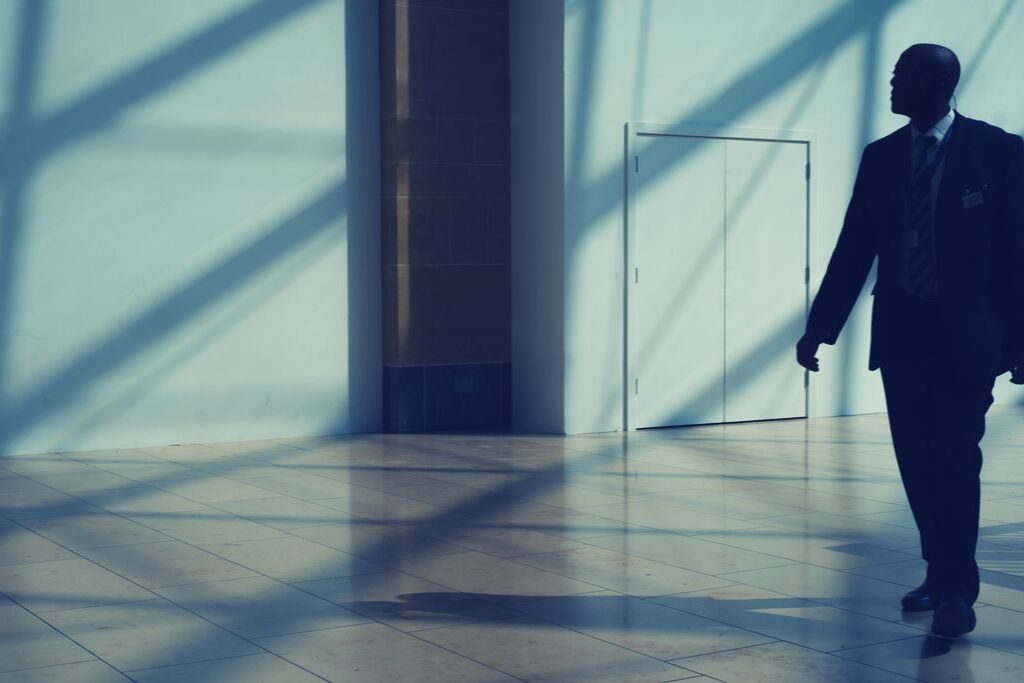Numerous studies show that a building’s design has the potential to reduce the risk of crime. Crime Prevention Through Environmental Design (CPTED) is a method of design that uses aesthetically pleasing principles while also reducing both the vulnerability to and the opportunity for crime. Implementing CPTED strategies during a building’s design phase is the most cost-effective and efficient way to boost security, but one advantage is that they can also be integrated into existing buildings as well.
As a concept, discouraging crime via design isn’t new. The Great Wall of China or medieval castle moats around Europe exemplify this centuries-old practice. CPTED itself became an accepted design approach in the 1970s. Now, buildings and communities all over the world adopt it. Though specific CPTED principles can vary, the basic strategies include natural surveillance, natural access control, territorial reinforcement, and maintenance. Incorporating these principles can significantly boost the security of any building.
Natural Surveillance

People looking to engage in criminal activity don’t want to be observed. Hence, creating an environment that makes activity easy to see and, maybe even more importantly, lets would-be criminals know they’re being watched, is the theme of this principle. Following cautions are integral parts of the feeling of visibility.
- Windows: Keep windows free from obstacles—both indoors and outdoors. Obstructions might be anything from trees to landscaping to window decorations to office equipment. Where applicable, face desks toward windows so occupants can see what’s going on outside and who’s coming in and going out of the building. Incorporating windows on all sides with full views of the property is often a wise design choice.
- Entrances: Ideally, the building’s doors will be at least partially visible to the street or parking lot, with a clear line of sight to see an approaching person from a distance.
- Lighting: Good lighting is a major criminal deterrent. Keeping entrances and parking lots well-lit and installing lights in any dark spots might significantly reduce criminal risks.
- Landscaping: Potential hiding spots can attract criminal activity. However, by moving or eliminating fences and dumpsters and cutting down bushes and hedges to a maximum of 2-1/2 to 3 feet, it’s possible to mitigate the risks.
Natural Access Control
Closely associated with the natural surveillance principle, natural access control involves using landscaping, lighting, signs, fences, and the like to direct people where they need to go and to mark public and private areas.
- Entrances: Ideally, there should be just one entrance and exit in a building to maximize security. Install doors that automatically close and lock and consider a maze entrance in a large public lobby.
- Landscaping: Using pathways and signs to direct people to the building’s entrance gives people less excuse to be in areas they shouldn’t be.
Territorial Reinforcement
This principle involves the differentiation between public and private spaces, which discourages potential intruders from trespassing into private areas. Territorial reinforcement also promotes a feeling of ownership. When building occupants feel that the territory is “theirs,” they’re more likely to feel responsible for the property and look out for intruders.
Methods include:
- Using an entryway or vestibule as a transitional place between public and private spaces.
- Marking property boundaries with landscaping, fences, or pavement.
- Changing the way spaces within a property are used. For instance, an area that’s not often used may be avoided, resulting in more opportunities for criminal activity. By implementing approaches such as creating an inviting space and encouraging occupants to use it or moving vending machines into the area, it becomes safer, as there’s greater surveillance.
Maintenance

Criminals might consider an unkempt, rundown, poorly lit building as a warm welcome sign. Maintaining the property deters criminals, as it makes it clear that occupants care and are watching what’s going on.
- Landscaping: Keep trees, bushes, and hedges trimmed so they aren’t blocking views or creating hiding places.
- Lighting: Check lighting systems often and fix or replace them as needed.
- Entrances: Ensure that doors are in working order and that they close by themselves. An open door is a multi-faceted hazard.
- Overall: Clean up litter, remove graffiti and other vandalism, and keep the grass mowed.
Perception Matters
A key component of the CPTED concept is the perception of safety. Utilizing these strategies makes crime more difficult while also enabling building occupants to observe potentially bad behavior. If criminals feel they’re being watched and there aren’t good hiding spots or escape routes, they’re less likely to target any given building.






